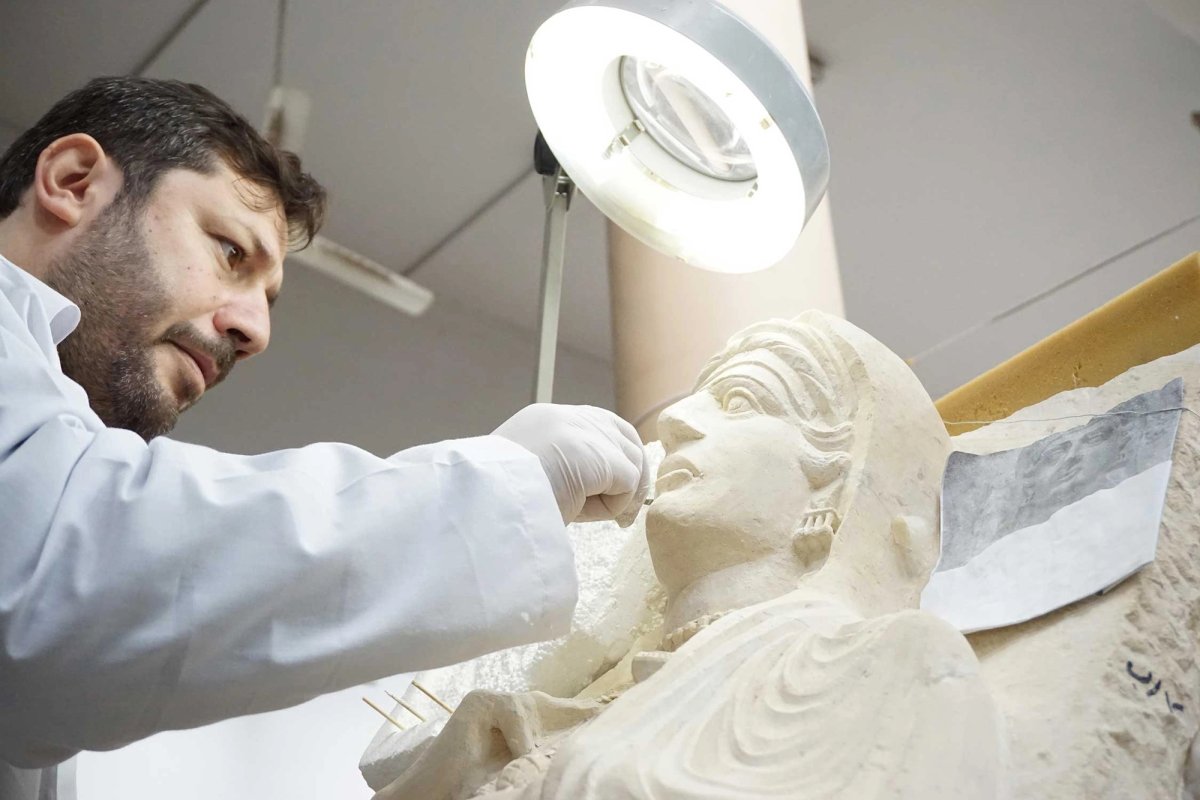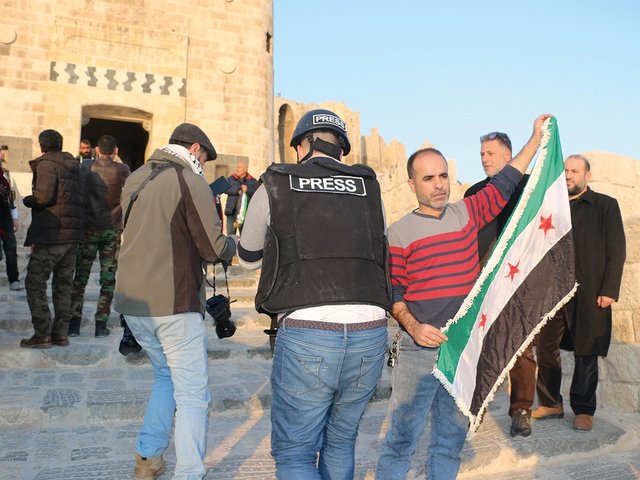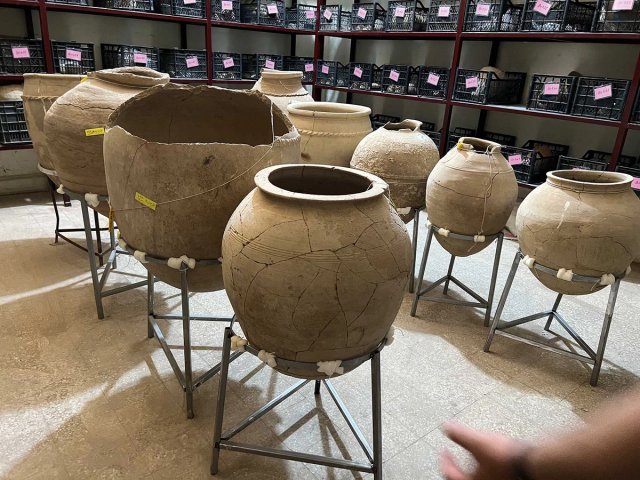In May, when US President Donald Trump unexpectedly announced plans to lift crippling sanctions on Syria, Rima Khawam felt a wave of relief. As the chief curator of the Damascus National Museum, she had spent years watching the institution and its invaluable collection fall into a state of ruin—unable to properly safeguard it amid war and sanctions.
The primary goal of the sanctions, imposed by the US and Europe after the war erupted in 2011, was to put pressure on the former Syrian president Bashar al-Assad and his regime. But they also isolated Syria from global financial systems and trade. Cultural institutions, many ravaged by conflict, were among several sectors starved of resources and international support.
“Maybe sometime soon we can expect real help and real collaborations, with a strategic plan,” Khawam tells The Art Newspaper from Damascus. “The strategic plan can include immediate, short-, middle- and long-term solutions for the reconstruction of our heritage, which is in very bad, bad, bad shape,” she says.
The museum’s walls and ceilings are cracked. Lack of power and equipment maintenance has impacted temperature control and ventilation, damaging delicate items. Most of the museum has been used as storage space to house items that were rescued from six other museums that were attacked, including in Palmyra, Deir ez-Zor and Aleppo—leaving much of its estimated 100,000-piece collection neglected.
Bénédicte de Montlaur, the president and chief executive office of the World Monuments Fund (WMF), says Syria’s rich heritage has suffered deeply from civil war, ongoing insecurity and international sanctions. These conditions, she says, curtailed the WMF’s ability—along with that of many other international organisations—to support cultural heritage protection over the past 14 years.
“Sanctions, in particular, have severely limited the flow of funding, technical expertise, and essential materials,” De Montlaur says. “In this context, Syrian heritage professionals and local communities have carried the burden of protecting their cultural legacy largely on their own, despite the tremendous risks posed by conflict, looting and prolonged neglect. Their resilience has been nothing short of remarkable,” she adds.
With the expected easing of sanctions, the WMF is now exploring ways to re-engage in Syria. “We are laying the groundwork so that, when the time comes, our re-entry into Syria will be immediate, collaborative and impactful,” she says. The WMF had previously highlighted the plight of Syria’s cultural heritage by placing it on its Watch List in both 2014 and 2018, in an effort to raise awareness and rally international support.
Khawam says she felt abandoned by friends and colleagues in the international community, many of whom were either blocked by their Western institutions from offering help, or unwilling to risk association with Syria under the threat of sanctions.
She also points out that for more than a decade, Syrians have had little access to museums across the country. “The loss of museums and collections can cause a deep psychological impact on a society as people lose part of their identity and history,” she says.
‘Nobody was expecting this’
Now, emergency intervention work is underway at the Damascus Museum, supported by Syrians for Heritage (Simat), a non-profit cultural association founded in Germany in 2018. Salam Al Kuntar, a founding member of Simat, says a noticeable shift in attitude from international organisations was apparent even before the sanctions announcement. “People in the heritage world, they immediately started engaging,” Al Kuntar says. “Nobody was expecting this whole lifting of sanctions. It will make life easier.”
Al Kuntar explains that Simat struggled for years to secure funding, particularly from European bodies, and faced an arduous process of transferring funds to projects inside Syria—typically via Turkey and a handful of money transfer organisations. She says Syria’s needs are so extensive that culture is unlikely to be a priority.
Ayman Al Nabo, the director of the Idlib Antiquities Center, an independent civil society organisation working to protect cultural heritage in north-western Syria, says that for years, most international organisations would not engage in dialogue. “We faced serious financial difficulties,” he says. “We were unable to receive funds directly. The money was often transferred through intermediaries, making the process very complicated, slow and sometimes risky,” he adds.
He points to the ongoing rehabilitation of the Idlib Museum, a project supported by Simat to restore the institution, which was damaged by bombings and an earthquake. “It took three years before the necessary funds could be transferred,” he says.
The fall of the regime and lifting of sanctions has already brought about a transformation. “Honestly, it was an amazing feeling to hear that Syria would be free of sanctions,” Al Nabo says. “We have been approached from organisations that had not worked with us before. The lifting of sanctions will greatly support our work in protecting Syrian cultural heritage.”





